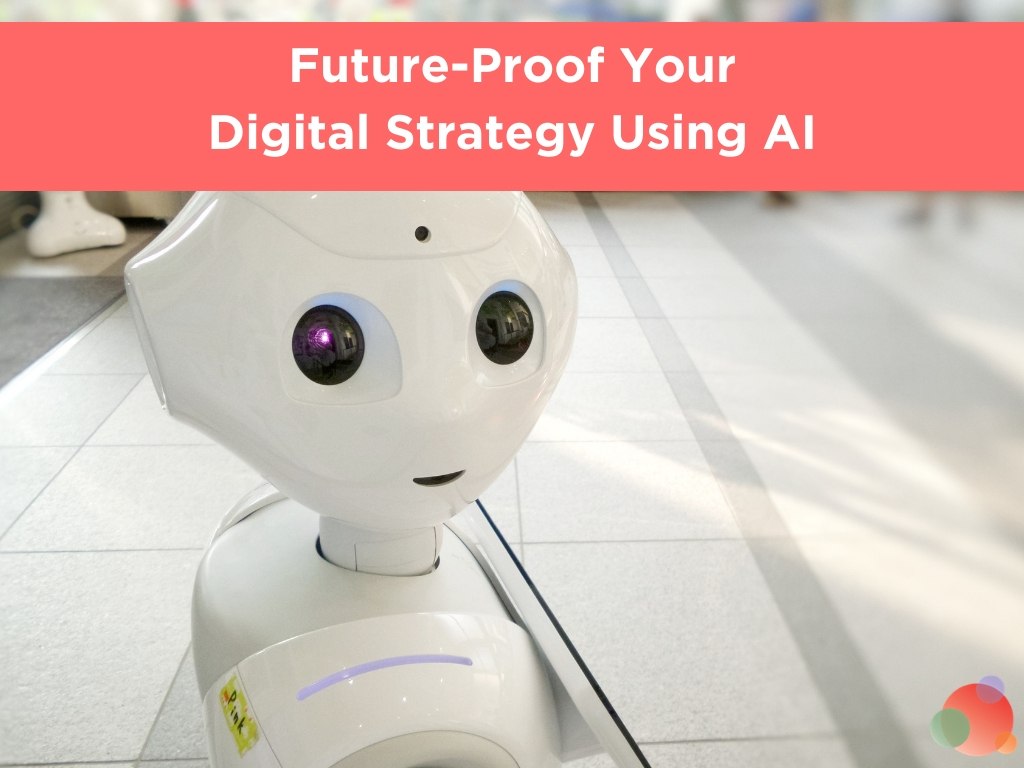 Many marketing experts believe artificial intelligence is the future.
Many marketing experts believe artificial intelligence is the future.
In fact, 45 percent of the fastest-growing companies will “employ” more smart machines and virtual assistants than people in 2018.
Demandbase found that 80 percent of marketing executives predict AI will revolutionize marketing by 2020.
And the AI market will surpass $100 billion by 2025.
Not a real shocker.
For your digital strategy, would you rather interpret the big data all by yourself?
Or do you prefer an AI software to select, organize, prioritize, and provide the right information based on the context and requirements for the task?
The answer seems obvious.
Marketers love predictive data and distributing surveys, but the task of interpreting all that information is daunting.
As a result, tons of Excel sheets and survey results are left underused and untouched.
When you create product recommendations, I’ll bet you rely on AI software to provide each consumer with the right product at the right moment.
For example, Netflix uses AI to provide a list of recommended shows based on a user’s past behavior and history.

SnapTravel uses a Facebook Messenger bot to help tourists find the best deals.
By simply indicating the location and dates of their travel, they can easily book their stay via the Messenger app.
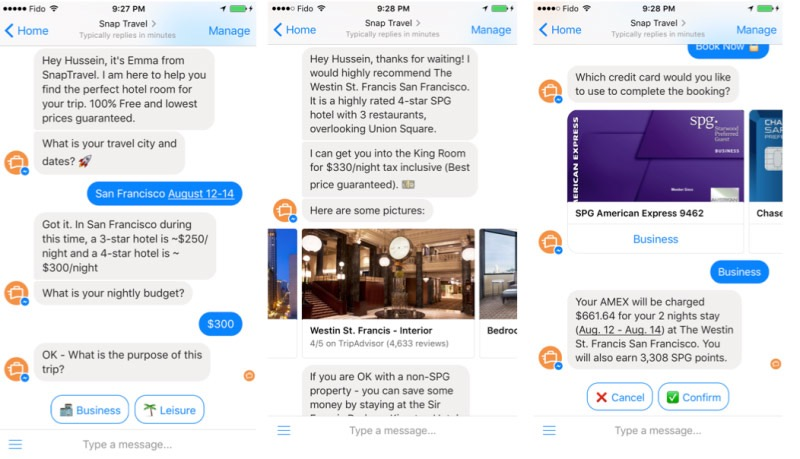
The terms chatbot and AI can be intimidating, especially if you have no background in coding, computer sciences, or data science.
But you can easily get onto the AI bandwagon by checking out online resources and industry trends.
So, how can you future-proof your digital strategy? How can you help your team adjust to an AI-powered future?
Let’s explore ways you can get started with AI in marketing.
Get Your Team Excited About AI
Many people in the marketing, e-commerce, and IT industries are interested in AI.
And chances are, there may be several people or groups in your agency who read and learn about AI in their free time.
They might be talking about creating their own chatbot.
Or they are building apps and attending AI-themed events and conferences.
That’s because, for a digital strategy, an AI-powered future is so exciting that many people want to be involved.
If you want to get your team excited about AI, the first step is to find these people in your company and encourage them to share their knowledge of AI in marketing.
Ask them to integrate chatbots in your e-commerce store, and use AI tools to create content and drive hyper-personalization.
Once you get marketers and data scientists fascinated, they will start experimenting.
Make sure you follow-up on their progress and encourage them if they experience frustrations.
You might start by training a bot to live chat with website visitors.
Enlist the help of a tool like GrowthBot to find prospects and analyze traffic.
Listen to podcasts such as This Week in Machine Learning and AI.
And read articles like A Marketer’s Guide to AI and 45 AI Marketing Tools to Get Started With.
The most important message to deliver to your team is that AI won’t replace them, but it will enable them to work smarter and faster.
These all sound simple, but learning new skills and tools is often a time-consuming process.
And that’s OK. Trying something new is challenging, but the results are worth it.
After experimenting and testing, you’ll eventually need to integrate AI into your digital strategy.
Scary? Yes.
Necessary for innovation? You bet.
Chatbot Integration
Right now, chatbot is a buzzword in the sales and marketing industry.
Gartner believes that 85 percent of the consumer’s relationship with a business will be managed without interacting with a single human. Why?
Let’s discuss some of the popular benefits of using chatbots.
Chatbots Can Upgrade Your Customer Service
Chatbots can offer virtual assistance, nurture leads, create tailored product recommendations and send follow-ups.
Starbucks’ chatbot—My Starbucks Barista—enables customers to order via message or voice recognition. It can confirm the location of the nearest Starbucks branch and instantly process payments.
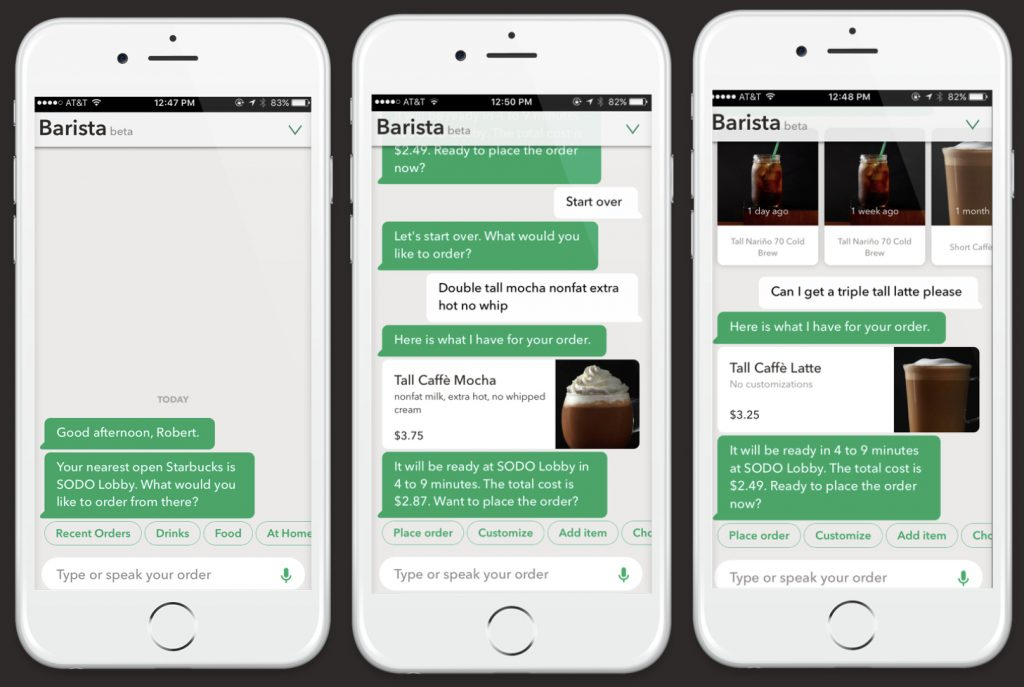
Chatbots Have High Open Rates
Olyo tested a campaign using both a Messenger bot and email.
Their results found that when a bot sends a message, the click-through rate was 12 times higher than the message obtained by email.
And the open rate was an astounding 98 percent.
One of the best ways to use chatbot messaging capacity is through automated abandoned cart emails and messages.
Typically, abandoned cart emails can recover about 40 percent of your sales.
In your digital strategy, you can easily message, interact, and follow-up with hundreds of customers who visit your online store.
Chatbots Can Drive Hyper-Personalization
Perhaps the most popular benefit a chatbot can offer is hyper-personalization.
You can program your chatbot to send the right product at the right moment. And you can create personalized messages that echo your brand’s voice.
For example, American Eagle Outfitters‘ target market is millennial consumers.
So the bot emulates how young people converse in its messages.
It also sends personalized product recommendations based on the interaction with consumers.
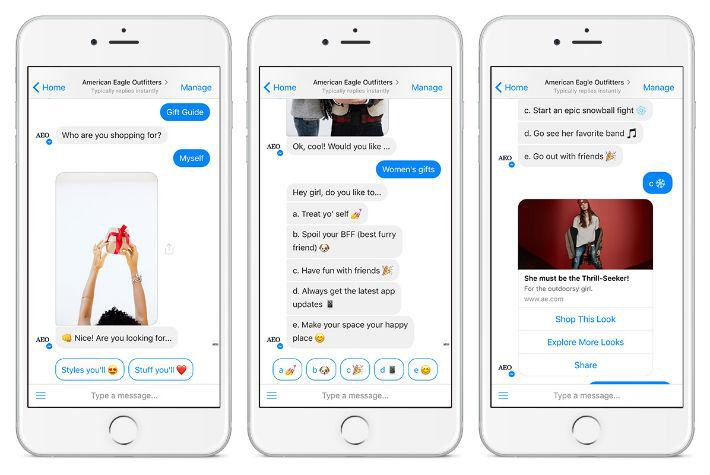
Turn Your Shopify Store into an AI-Powered Chatbot
Integrating a chatbot into your Shopify store is easy.
First, use the GoBeyondShopify app to turn your Shopify store into a bot and connect it to the GoBeyond Template on Chatfuel.
To get this done, perform these two steps:
- Sign up for the GoBeyond App on Shopify: This app helps you automate messenger marketing and customer service for Shopify. Plus, the AI Systems can predict the best time to sell to consumers.
- Get a Chatfuel account: Chatfuel is the leading bot platform for creating a messenger bot on Facebook. It offers a bot template from some of the biggest bot communities in the world.
Once you’ve completed these steps, watch this video or read the step-by-step Shopify Chatbot Tutorial to create your bot.
Chatbots for Content Creation
AI tools can help content creators and blogging teams create smarter and better content at a faster pace.
There are different types of AI solutions and tools available in the market, but which should you choose?
Here are a few top-notch AI tools to help grow your content marketing.
Grammarly
When writing, it’s not always easy to avoid spelling and grammar errors.
Grammarly functions as a free writing assistant.
It provides expert help and detailed feedback for all your mistakes. And there are even weekly progress reports.
It scans your document for common and complex grammatical mistakes, including modifier placement and subject-verb agreement.
In short, it’s one of the best tools writers can use to improve the quality and credibility of their writing.
Crayon
Finding a great topic to write about is an everyday task for content creators.
While brainstorming article ideas may be easy, identifying popular topics that interest your audience and meet their needs can prove to be a challenge.
Crayon is an AI that makes brainstorming content easier with its competitive intelligence tools.
It tracks competitor websites and content in real-time and identifies content gaps and opportunities.
It can also analyze more than 100 types of online data from seven million sources.
That means you can identify the most popular topics for your niche audience and determine the next step in your digital strategy.
The tool can be combined with the Hubspot Content Strategy tool, which helps writers discover potential topics for their blogs.
Uberflip
Uberflip uses AI to organize and keep an inventory of the content you’ve published.
It then provides readers with curated content based on the articles they’ve read on your site.
The idea is to provide readers with content they’re interested in, so they stay longer and visit your blog more often.
Not surprisingly, it’s helped a lot of brands in their content marketing efforts.
Using Uberflip, software startup, Revinate, increased content engagement by 300 percent and VersionOne found that 88 percent of their target accounts were more engaged with the content.
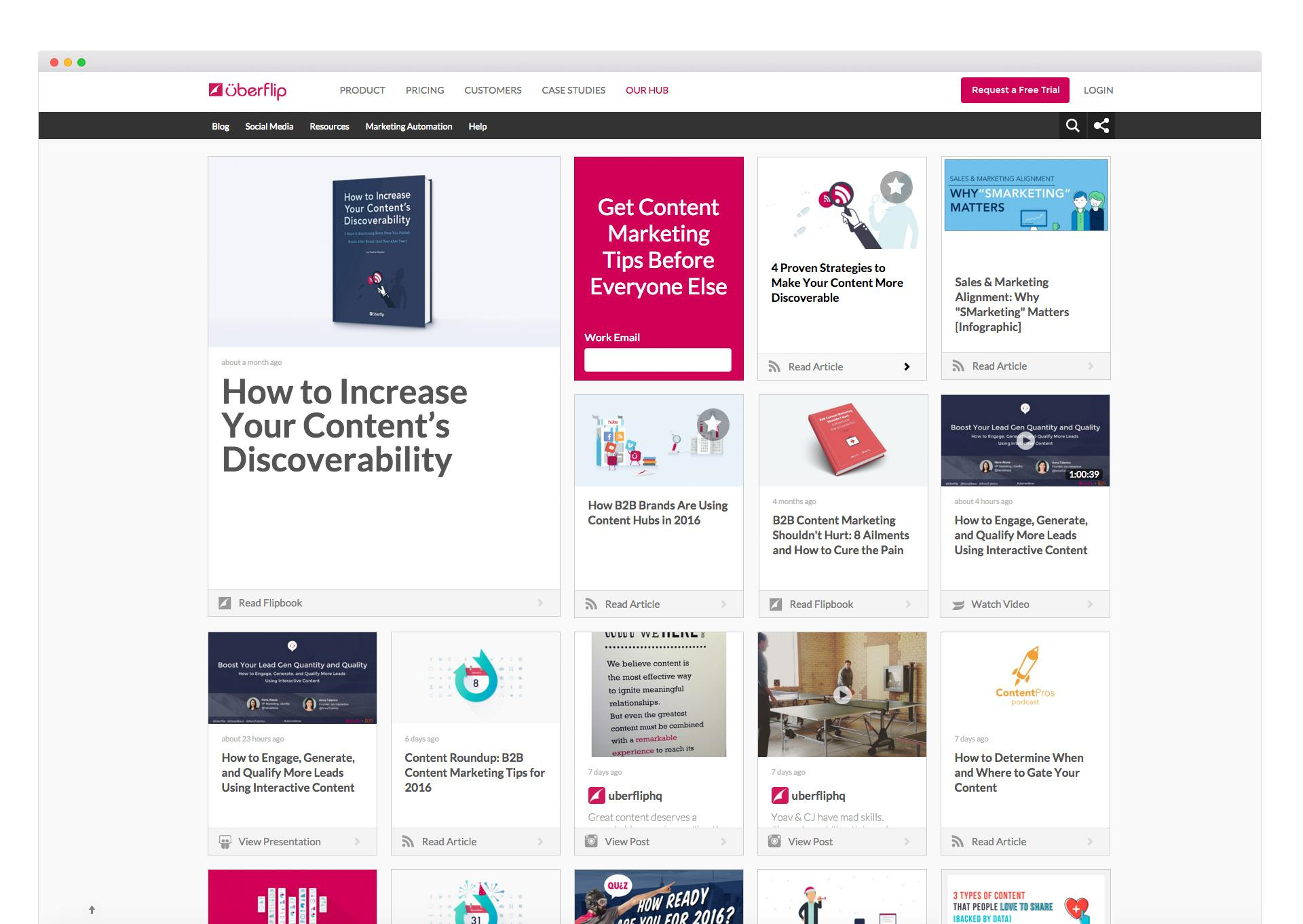
Use AI for Data Unification
The new generation of AI-integrated data unification tools makes data gathering and interpretation easy, fast, and cheap.
A customer journey analytics platform such as Pointillist can aggregate customer data across all your touchpoints and systems.
Gone are the days when your analysts had to spend weeks crunching numbers and delivering a report.
Pointillist instantly creates unified customer profiles and fixed field mappings to help you visualize actual customer journeys.
Its software uses AI, machine learning, and predictive analytics to help you make better decisions.
Not only can you test hypotheses and predict consumer behavior, but you can also discover what consumers are doing before, after, and within their customer journey.
This way, you can create behavior-based customer segments and assess each one based on KPIs and key metrics.
It’s a far cry from the daunting data interpretation tasks that gave you a massive headache.
Tracking Digital Strategy Performance
When we say terms such as digital strategy, we often think of things such as content, social media, and SEO.
We don’t think about improving team performance.
But that’s one of the most important parts of executing a digital strategy.
Everyone on the team has to be in sync.
Finished tasks must be updated while creating new tasks on a constant basis.
The good news is bots like Standup Bot, and Nikabot make managing teams a lot easier.
Standup Bot aks three standup questions of your team, such as:
- What did you accomplish yesterday?
- What are you working on today?
- Is anything standing in your way?
Then, it aggregates the answers and posts them in one easy-to-find place.
You can also use it to conduct multiple standup meetings, keep track of tasks, get standup meeting reports and schedule standups.
Nikabot functions in the same way. It collects information on your team’s activities and keeps everyone up-to-date.
Use Bots to Qualify Leads
You can also use bots to qualify leads for you.
Driftbot by Drift lets you ask qualifying questions to consumers to find out where they are in the sales funnel.
Do your customers need to book meetings? Once a lead is qualified, Driftbots can automatically book meetings in your sales team’s calendars 24/7.
More importantly, if a lot of interested customers are asking questions about your product, Driftbots can search the Help Center to provide customers with answers.
This enables you to interact and engage with customers with little effort and time.
How Will You Use AI in Your Digital Strategy?
Now that you have an idea of how to begin using AI, it’s time to future-proof your digital strategy.
Find people or groups interested in AI at your organization, and encourage them to share what they know.
Integrate AI into your strategy and get your team onboard by checking out tools, podcasts, and other resources.
Finally, be sure to communicate that AI will not take the place of your employees, but instead, help them work smarter, easier, and faster.